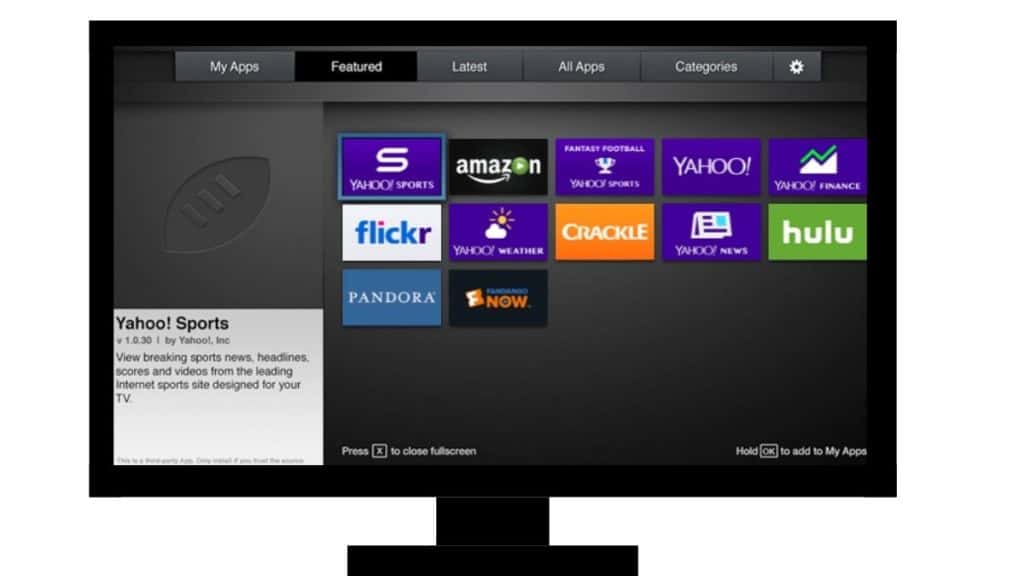Yahoo Widgets once brought smart functionality to TVs, offering users quick access to news, weather, and social media updates. However, the service is no longer available on modern TVs.
This article explores the history of Yahoo Widgets, why it was discontinued, and how the evolution of smart TV platforms led to its demise.
What Were Yahoo Widgets on TVs?
Yahoo Widgets was a platform that allowed users to access small, internet-connected applications directly on their TVs. These widgets displayed essential information, such as weather updates, stock market data, and news, without requiring a separate device. First launched in the late 2000s, Yahoo Widgets brought an early version of “smart” functionality to TVs, laying the groundwork for modern smart TVs.
The platform gained traction through partnerships with leading TV manufacturers like Samsung and LG, integrating Yahoo Widgets into their models. Users could navigate these widgets using their remote controls, enabling a seamless experience for checking updates without interrupting their viewing.
Why Did Yahoo Widgets Stop Working on TVs?

The discontinuation of Yahoo Widgets was driven by a combination of technological advancements, changing consumer preferences, and internal challenges at Yahoo.
Technological Advancements
As smart TV platforms evolved, they began offering more comprehensive and flexible app ecosystems. Platforms like Android TV, Roku, and Fire TV introduced dedicated app stores with hundreds of applications, providing far more functionality than Yahoo Widgets could. Unlike widgets, these apps could support streaming services, gaming, and advanced customization, making widgets obsolete.
Changing Consumer Behavior
In the early 2010s, the rise of streaming services like Netflix, Hulu, and Amazon Prime Video shifted consumer preferences toward app-based entertainment. Viewers no longer needed small widgets for weather or news updates when smartphones and dedicated streaming apps provided better experiences.
Yahoo’s Internal Challenges
Yahoo faced significant financial and organizational challenges during this time. As the company underwent restructuring and focused on other ventures, it deprioritized Yahoo Widgets. The platform saw little investment, and its technology quickly fell behind in a rapidly advancing market.
How Did TV Manufacturers Adapt?
When Yahoo Widgets was discontinued, TV manufacturers pivoted to more robust platforms. For example:
- Samsung introduced its proprietary Tizen OS, which supports a wide range of apps and services.
- LG developed WebOS, known for its intuitive interface and app store.
- Sony and Others adopted Android TV, offering access to the Google Play Store and its vast library of apps.
These platforms provided users with better functionality, including advanced streaming options, voice assistants, and more interactive features, surpassing the capabilities of Yahoo Widgets.
Impact on Users
The end of Yahoo Widgets marked the transition from simple, static features to dynamic, app-based ecosystems. While some users missed the simplicity of widgets, the new platforms offered significant advantages, including:
- More Content Choices: Access to streaming apps, games, and tools for productivity.
- Improved Performance: Faster interfaces and seamless updates.
- Enhanced Customization: Users could tailor their experience with a broader selection of apps.
What Replaced Yahoo Widgets?
Modern smart TV platforms have fully replaced Yahoo Widgets, offering a better user experience and more advanced capabilities:
- Tizen OS (Samsung): A streamlined operating system with an app store and support for voice assistants like Bixby.
- WebOS (LG): Known for its sleek interface and AI-powered recommendations.
- Android TV (Multiple Brands): Integrates with Google services and offers access to thousands of apps via the Google Play Store.
- Roku and Fire TV: Affordable options with robust app ecosystems.
These platforms provide not only the features Yahoo Widgets once offered but also modern conveniences like 4K streaming, voice search, and smart home integration.
Could Yahoo Widgets Make a Comeback?
While Yahoo Widgets played an important role in the early days of smart TVs, it is unlikely to return in its original form. The market has moved toward app-driven ecosystems that offer more versatility and functionality. However, Yahoo’s technology has found a new life in other areas, such as content delivery and advertising, showing that parts of its innovation still thrive in modern digital ecosystems.
Conclusion
Yahoo Widgets was a groundbreaking feature that brought smart functionality to TVs before the age of app-based platforms. However, its limitations, coupled with the rapid evolution of technology and changing consumer needs, led to its decline. Today, modern smart TV platforms like Tizen, WebOS, and Android TV provide more robust, customizable, and user-friendly solutions, making Yahoo Widgets a relic of the past.
If you have fond memories of Yahoo Widgets or want to share your experience with early smart TV technology, feel free to comment below!